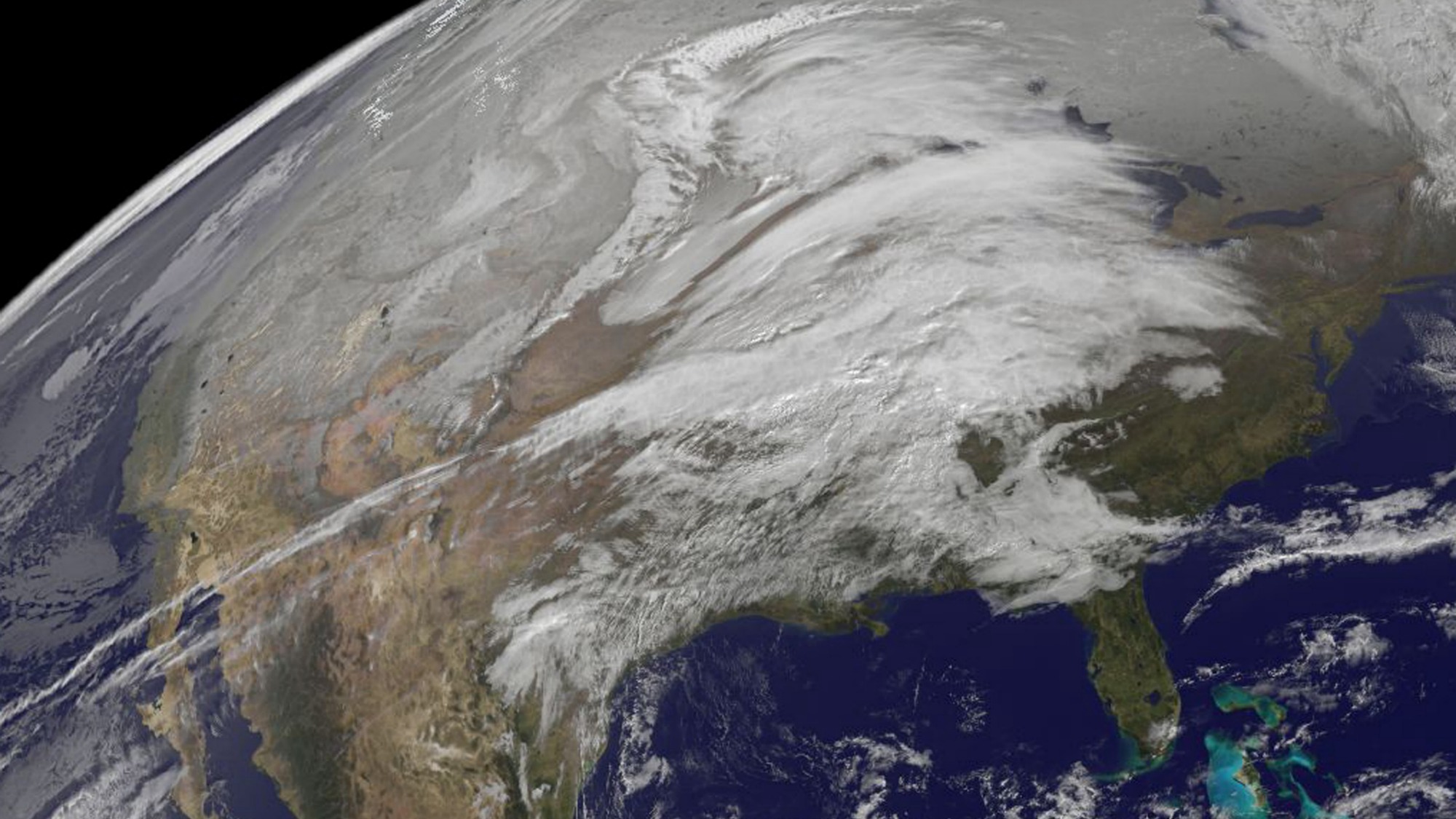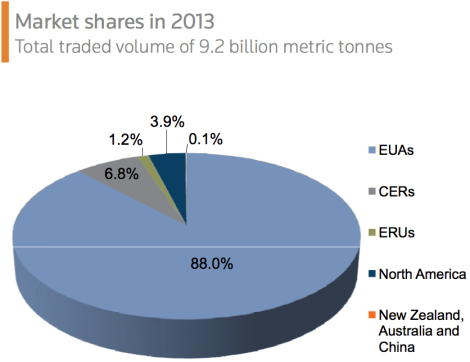In most of the carbon-trading world, it has been getting cheaper in recent years to buy the rights to pollute the atmosphere with climate-changing carbon dioxide. That’s largely because recession-afflicted Europe is awash with too many carbon allowances for its trading scheme to have any real bite, and because demand for U.N.-issued allowances has crashed along with hopes of a meaningful international climate agreement to replace the Kyoto Protocol.
But in a bleak year for carbon markets, North America was a rising star.
Despite ongoing failure by the U.S. and Canadian governments to impose limits or taxes on greenhouse gas pollution, state and regional initiatives on the east and west coasts of North America moved forward.
California and Quebec are now the most expensive places in the world in which to pump carbon dioxide into the air.
Still, the value of global carbon markets plummeted last year, according to a new analysis published by Thomson Reuters Point Carbon. “The healthy growth in the North American markets was not enough to compensate for a stagnating European market and the collapse of UN-issued credits,” it found.
For the first time since 2010, the global carbon markets receded year-on-year in terms of transacted volumes. …
The drop in value was more significant: as European carbon prices continued to fall, and the price of international credits collapsed completely, the total value of the transactions was 38.5 billion euros [$52.3 billion], a 38 percent decrease from the 2012 value. …
The year saw a bloom in the North American carbon markets, with strong growth in California and renewed activity in the north-eastern states’ Regional Greenhouse Gas Initiative (RGGI) market. We assess overall transactions to have been 390 million metric tonnes with a value of $2.8 billion (€2 billion). This equals a volume growth of 200 percent and a value growth of 262 percent.
In the Western Climate Initiative (WCI) that encompasses California and the Canadian province of Québec, carbon allowance and offset prices are the highest in the world, with the allowance price floor of $10.71/t (approximately €7.8) in 2013 and trades clearing above that.
As the following graph shows, North America still has a long way to go before it could rival the sheer size of the E.U. Emission Trading Scheme (which trades EUAs) or, to a lesser extent, the U.N.-run international market for certified emission reductions (CERs) and emission reduction units (ERUs):
Other highlights in 2013 carbon-trading news included the launch of trading programs in China and Mexico. A lowlight was Australia’s election of a new prime minister, Tony Abbott, who pledges to dismantle his country’s trading program.




